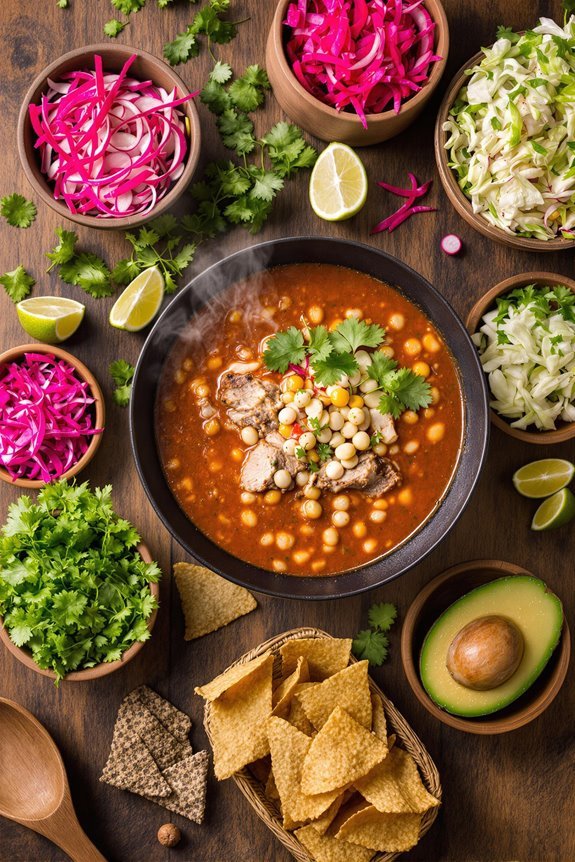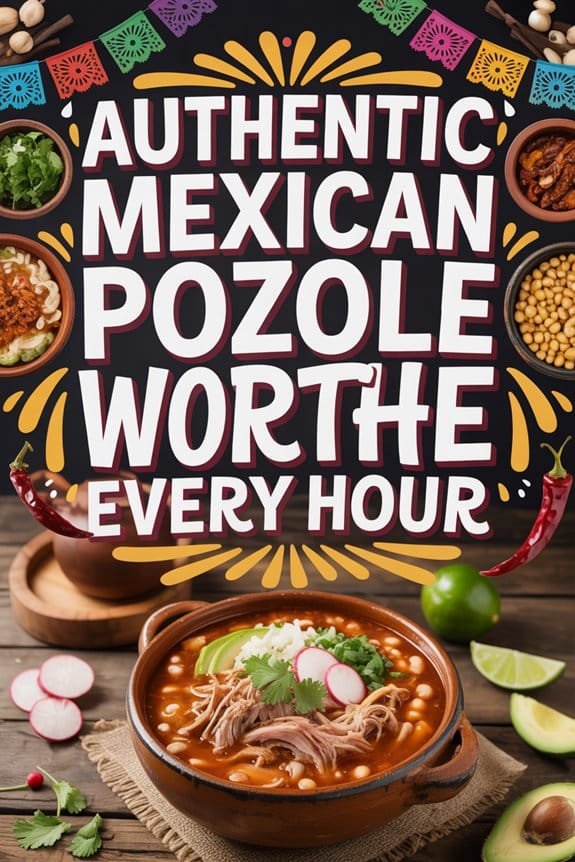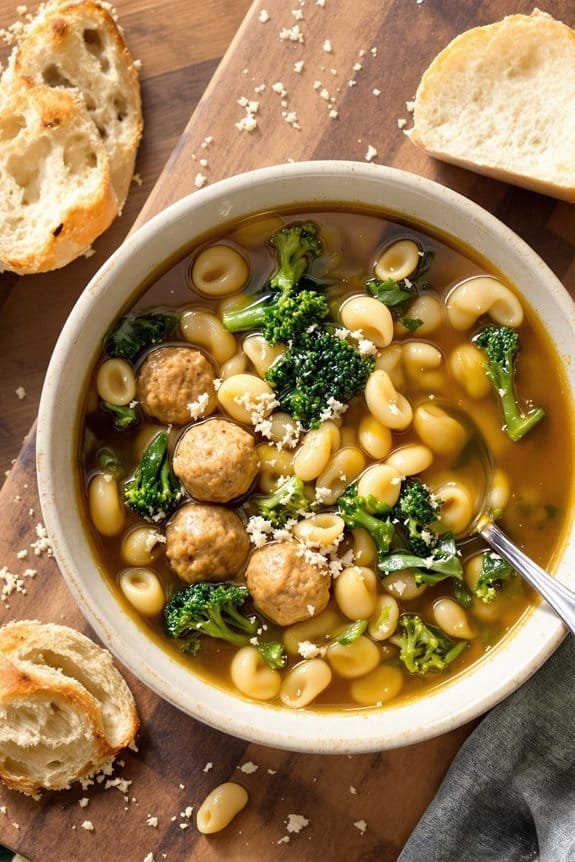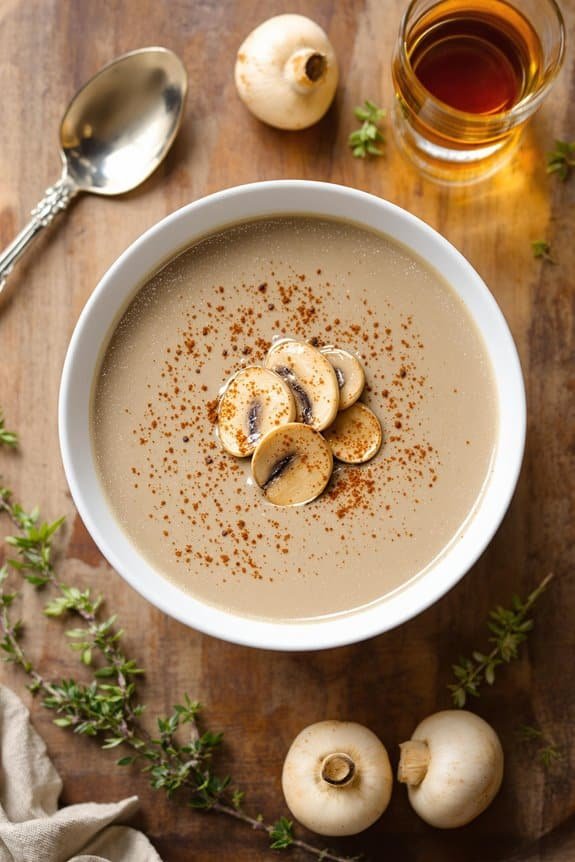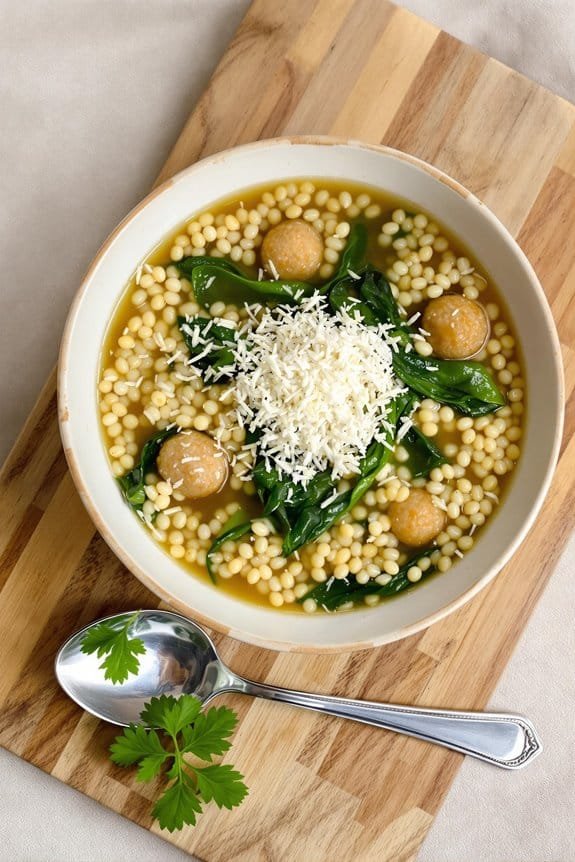The Simple Joy of this Authentic Mexican Pozole
When I think about comfort food that truly warms the soul, pozole sits at the very top of my list.
There’s something magical about this traditional Mexican soup that goes beyond just filling your belly. The rich, earthy broth mingles with tender pork and plump hominy in ways that make you forget your troubles.
What makes pozole special isn’t complexity – it’s the beautiful simplicity of letting quality ingredients do their thing.
Six hours of patient simmering transforms basic components into liquid gold that’ll have your kitchen smelling like pure heaven.
Ingredients
Getting your hands on the right ingredients for authentic pozole is like assembling a dream team – each player has their own important role, and together they create something way better than the sum of their parts. The beauty of this recipe lies in how accessible most ingredients are, though you might need to venture beyond your typical grocery store for a couple of specialty items.
Ingredients:
- 4 lbs pork roast
- 6 (16 ounce) cans white hominy, drained
- 20 dried chili pods (New Mexico or Anaheim chiles preferred)
- 10 arbol chili pods
- 1/4 cup oregano
- 2 tablespoons salt (more to taste)
- Water
- 1 large white onion (1/2 for boiling, 1/2 minced for serving)
- 1 cup red radish, minced
- 1-2 cups cilantro, chopped
- 3-4 cups green cabbage, thinly shredded
- 3-4 limes, cut into wedges
- 2-3 avocados, sliced
- Corn chips
- 1 head garlic
The dried chiles are where things get interesting – they’re the soul of your pozole, so don’t even think about substituting them with chili powder from a jar. Mexican markets are your best bet for finding quality New Mexico or Anaheim chiles, and while you’re there, grab some arbol chiles too. These little fiery beauties pack serious heat, so handle with respect. The hominy might seem like an odd ingredient if you’ve never worked with it before, but trust me on this one – those plump, chewy kernels are what make pozole, well, pozole. Look for it in the canned vegetable aisle, and don’t stress if you can only find yellow hominy instead of white.
How to Make this Authentic Mexican Pozole
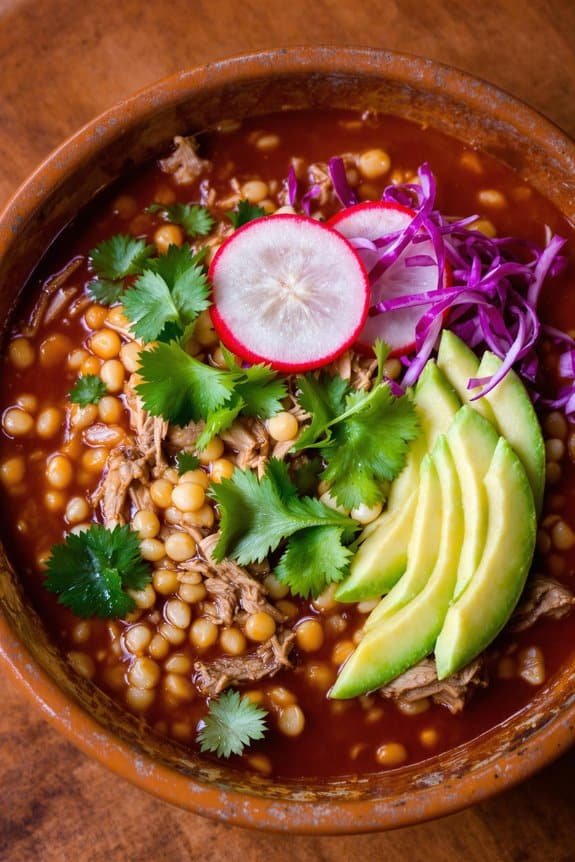
Making pozole is honestly one of those recipes that feels intimidating at first, but once you get the rhythm down, it’s surprisingly forgiving. Start by tossing that 4 lb pork roast into your largest pot with enough water to cover it generously – we’re talking about 4-6 cups here. Drop in the entire head of garlic (don’t even bother peeling it) and half of that large white onion, then add 2 tablespoons of salt.
Now comes the part that tests your patience: let this whole situation simmer away for about six hours. I know, I know, six hours sounds like forever, but this is what transforms tough pork into the kind of tender, shredable meat that makes pozole legendary. Your house is going to smell absolutely incredible, and you’ll probably have neighbors asking what’s cooking.
About thirty minutes before you’re ready to serve, it’s time to tackle those chiles, and this is where the magic really happens. Bring 5 cups of water to a boil and dump in those 20 dried New Mexico or Anaheim chiles along with the 10 arbol chiles.
Turn off the heat and let them sit for ten minutes – they’ll soften up and release all those complex flavors. Pour the whole mess into your blender and blend until you get a loose paste, then strain it to remove any stubborn bits of skin. Fish out the garlic and onion from your pork pot, then add the drained hominy from those 6 cans, 2½ cups of your beautiful chili broth, and that ¼ cup of oregano.
Let everything simmer together for another twenty minutes, taste for salt, and you’re basically done with the hard part.
The final step is all about setting up that gorgeous garnish spread that makes pozole feel like a celebration. Arrange your minced red radish (1 cup), chopped cilantro (1-2 cups), thinly shredded cabbage (3-4 cups), lime wedges, sliced avocados, and corn chips on a big platter or in separate bowls. Consider serving your pozole in individual French onion soup crocks for an authentic presentation that keeps each bowl piping hot. Everyone gets to build their own perfect bowl, piling on whatever combination makes their taste buds happy, and honestly, watching people customize their pozole is almost as satisfying as making it in the first place.
Substitutions and Variations
While this recipe is pretty traditional, I totally get that sometimes you need to work with what’s actually sitting in your pantry or make adjustments for dietary restrictions.
Can’t find dried New Mexico chiles? Guajillo or ancho chiles work beautifully.
For a vegetarian version, I’d swap that pork for mushrooms or jackfruit, though you’ll miss some of that rich, meaty depth.
Yellow hominy instead of white? Go for it.
And if you’re feeling adventurous, chicken thighs make a solid substitute for pork roast, just reduce that cooking time to about three hours instead of six.
Additional Things to Serve With Authentic Mexican Pozole
Beyond the classic garnishes I’ve already mentioned, pozole practically begs for a few extra companions that’ll turn your soup night into a proper feast.
I’m talking warm corn tortillas for dunking, because who doesn’t love edible spoons? Mexican crema adds richness that’ll make you question why you ever bothered with sour cream.
Queso fresco crumbles beautifully on top, while pickled jalapeños bring that perfect acidic bite.
Don’t forget crusty bolillos or Mexican dinner rolls for serious bread lovers.
And here’s my secret weapon: elote-style corn kernels with mayo, chili powder, and lime. Trust me on this one.
Final Thoughts
As I sit here thinking about pozole, I can’t help but feel like this soup represents everything beautiful about Mexican cooking – it’s generous, it’s communal, and it’s absolutely forgiving to novice cooks who might mess up a step or two.
The six-hour cooking time might seem intimidating, but trust me, most of that’s just waiting around while the pork does its thing.
What you’re really making isn’t just dinner. You’re creating an experience, a reason for people to gather around your table and argue over who gets the last avocado slice.

